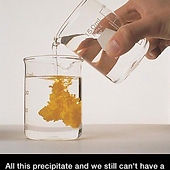M/J Physical Science Advanced
Resources for 7th Grade Bridge to A.P. Physical Science

SC.7.N.1.1
The Practice of Science
Define a problem from the seventh grade curriculum, use appropriate reference materials to support scientific understanding, plan and carry out scientific investigation of various types, such as systematic observations or experiments, identify variables, collect and organize data, interpret data in charts, tables, and graphics, analyze information, make predictions, and defend conclusions.

SC.7.N.1.2
The Practice of Science
Differentiate replication (by others) from repetition (multiple trials).

SC.7.N.1.3
The Practice of Science
Distinguish between an experiment (which must involve the identification and control of variables) and other forms of scientific investigation and explain that not all scientific knowledge is derived from experimentation.

SC.7.N.1.4
The Practice of Science
Identify test variables (independent variables) and outcome variables (dependent variables) in an experiment.

SC.7.N.1.5
The Practice of Science
Describe the methods used in the pursuit of a scientific explanation as seen in different fields of science such as biology, geology, and physics.

SC.7.N.1.6
The Practice of Science
Explain that empirical evidence is the cumulative body of observations of a natural phenomenon on which scientific explanations are based.

SC.7.N.1.7
The Practice of Science
Explain that scientific knowledge is the result of a great deal of debate and confirmation within the science community.

SC.7.N.2.1
The Characteristics of Scientific Knowledge
Identify an instance from the history of science in which scientific knowledge has changed when new evidence or new interpretations are encountered.

SC.7.N.3.1
The Role of Theories, Laws, & Hypotheses
Recognize and explain the difference between theories and laws and give several examples of scientific theories and the evidence that supports them.

SC.7.N.3.2
The Role of Theories, Laws, & Hypotheses
Identify the benefits and limitations of the use of scientific models.

SC.8.P.8.1
Properties of Matter
Explore the scientific theory of atoms (also known as atomic theory) by using models to explain the motion of particles in solids, liquids, and gases.

SC.8.P.8.2
Properties of Matter
Differentiate between weight and mass recognizing that weight is the amount of gravitational pull on an object and is distinct from, though proportional to, mass.

SC.8.P.8.3
Properties of Matter
Explore and describe the densities of various materials through measurement of their masses and volumes.

SC.8.P.8.4
Properties of Matter
Classify and compare substances on the basis of characteristic physical properties that can be demonstrated or measured; for example, density, thermal or electrical conductivity, solubility, magnetic properties, melting and boiling points, and know that these properties are independent of the amount of the sample.

SC.8.P.8.5
Properties of Matter
Recognize that there are a finite number of elements and that their atoms combine in a multitude of ways to produce compounds that make up all of the living and nonliving things that we encounter.

SC.8.P.8.6
Properties of Matter
Recognize that elements are grouped in the periodic table according to similarities of their properties.

SC.8.P.8.7
Properties of Matter
Explore the scientific theory of atoms (also known as atomic theory) by recognizing that atoms are the smallest unit of an element and are composed of sub-atomic particles (electrons surrounding a nucleus containing protons and neutrons).

SC.8.P.8.8
Properties of Matter
Identify basic examples of and compare and classify the properties of compounds, including acids, bases, and salts.

SC.8.P.8.9
Properties of Matter
Distinguish among mixtures (including solutions) and pure substances.

SC.8.P.9.1
Changes in Matter
Explore the Law of Conservation of Mass by demonstrating and concluding that mass is conserved when substances undergo physical and chemical changes.

SC.8.P.9.2
Changes in Matter
Differentiate between physical changes and chemical changes.

SC.8.P.9.3
Changes in Matter
Investigate and describe how temperature influences chemical changes.

SC.7.P.10.1
Forms of Energy
Illustrate that the sun's energy arrives as radiation with a wide range of wavelengths, including infrared, visible, and ultraviolet, and that white light is made up of a spectrum of many different colors.

SC.7.P.10.2
Forms of Energy
Observe and explain that light can be reflected, refracted, and/or absorbed.

SC.7.P.10.3
Forms of Energy
Recognize that light waves, sound waves, and other waves move at different speeds in different materials.

SC.6.P.11.1
Energy Transfer and Transformations
Explore the Law of Conservation of Energy by differentiating between potential and kinetic energy. Identify situations where kinetic energy is transformed into potential energy and vice versa.

SC.7.P.11.1
Energy Transfer and Transformations
Recognize that adding heat to or removing heat from a system may result in a temperature change and possibly a change of state.

SC.7.P.11.2
Energy Transfer and Transformations
Investigate and describe the transformation of energy from one form to another.

SC.7.P.11.3
Energy Transfer and Transformations
Cite evidence to explain that energy cannot be created nor destroyed, only changed from one form to another.

SC.7.P.11.4
Energy Transfer and Transformations
Observe and describe that heat flows in predictable ways, moving from warmer objects to cooler ones until they reach the same temperature.

SC.6.P.12.1
Motion of Objects
Measure and graph distance versus time for an object moving at a constant speed. Interpret this relationship.

SC.6.P.13.1
Forces and Changes in Motion
Investigate and describe types of forces including contact forces and forces acting at a distance, such as electrical, magnetic, and gravitational.

SC.6.P.13.2
Forces and Changes in Motion
Explore the Law of Gravity by recognizing that every object exerts gravitational force on every other object and that the force depends on how much mass the objects have and how far apart they are.

SC.6.P.13.3
Forces and Changes in Motion
Investigate and describe that an unbalanced force acting on an object changes its speed, or direction of motion, or both.



